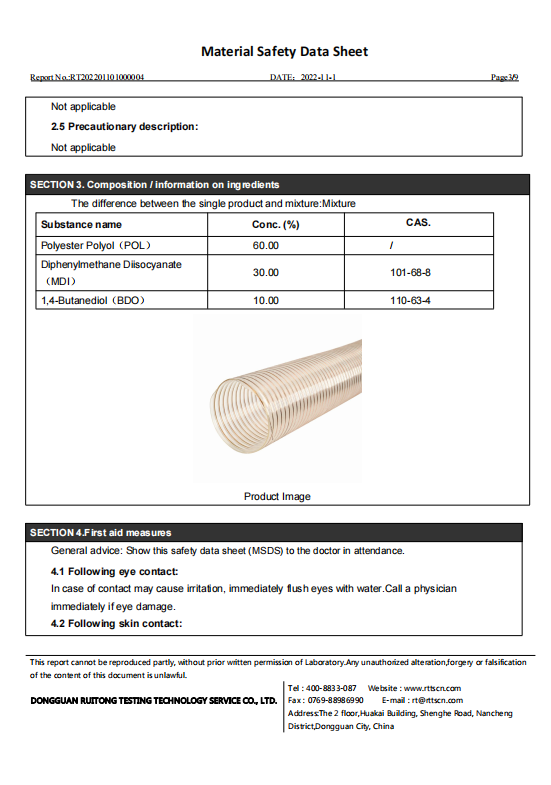suction hose vs discharge hose
Suction Hose vs. Discharge Hose Understanding the Differences and Their Applications
When it comes to fluid transfer systems, hoses play an integral role in efficiently moving liquids from one point to another. Two types of hoses that are essential in these systems are suction hoses and discharge hoses. Although they may appear similar in function, they serve distinct purposes and have unique characteristics. Understanding the differences between suction and discharge hoses is crucial for selecting the appropriate hose for your specific needs.
What is a Suction Hose?
A suction hose is specifically designed for vacuum applications. Its primary function is to draw liquids (or gases) from a source, using a negative pressure created by a pump. These hoses are usually reinforced to withstand the external atmospheric pressure without collapsing, as they operate under negative pressure. The inner diameter of a suction hose is typically larger than that of many discharge hoses to facilitate the movement of a larger volume of liquid.
Suction hoses are commonly used in various industries, including agriculture, construction, and wastewater management. For example, in agricultural settings, suction hoses are used to transfer water from a well or a pond to irrigation systems. In construction, these hoses help in extracting water from flooded areas. The materials used for manufacturing suction hoses vary, but they are often made from flexible PVC, rubber, or thermoplastic materials to ensure durability and resistance to abrasion.
What is a Discharge Hose?
Conversely, a discharge hose is designed to expel fluids from a system. It employs positive pressure created by a pump to push liquids out of the hose. Discharge hoses are often made from high-quality materials to withstand the high pressures involved in fluid discharge processes. Unlike suction hoses, which typically have a larger diameter, discharge hoses may be available in various diameters depending on the specific application and required flow rate.
Discharge hoses are extensively used in fire-fighting, dewatering applications, and chemical transfer processes. For instance, in fire-fighting operations, fire hoses are a type of discharge hose designed to deliver water at high pressures to extinguish flames. Similarly, in industrial settings, discharge hoses transfer chemicals from storage tanks to production lines, ensuring safe and efficient delivery.
suction hose vs discharge hose

Key Differences Between Suction and Discharge Hoses
1. Operating Pressure The fundamental difference lies in the operating pressure. Suction hoses operate under negative pressure, while discharge hoses work under positive pressure. This difference necessitates variations in design and material selection.
2. Reinforcement and Construction Suction hoses must be reinforced to prevent collapse under vacuum conditions. Typically constructed with layers of fabric or spiral wire, they maintain their shape even under low-pressure conditions. Discharge hoses, on the other hand, are designed to withstand high-pressure environments and therefore need to be sturdy yet flexible enough to handle frequent movement.
3. Applications The applications for suction and discharge hoses are different. Suction hoses are ideal for drawing liquids from a source, whereas discharge hoses are used for pushing liquids out of a system.
4. Size and Diameter Suction hoses are often larger in diameter to facilitate the flow of liquids. In contrast, discharge hoses may come in various sizes, depending on the required flow rate and pressure.
Conclusion
Choosing between a suction hose and a discharge hose is a critical decision that can impact the efficiency and safety of fluid transfer operations. Understanding their differences in design, function, and application can help users select the right type of hose for their specific needs. Proper selection ensures that systems are not only efficient but also durable and capable of handling the demands of various operational conditions. Whether you are involved in agriculture, construction, or any other industry that requires fluid transfer, being knowledgeable about these hoses will aid in achieving optimal results and maintaining system integrity.
-
Top Quality Oxy Acetylene Hoses for Sale Fit for Welding DemandsNewsJul.28,2025
-
The Future of Pneumatic Air Tubes in IndustryNewsJul.28,2025
-
Superior and Reliable LPG Hose Pipe Solutions for Every NeedNewsJul.28,2025
-
Exceptionally Durable and Versatile Premium Braided PVC TubingNewsJul.28,2025
-
Best Adapters for Connecting Garden Hose to PVC Pipe ConnectionsNewsJul.28,2025
-
The Essential Role of LPG Hoses in Safe and Efficient Gas DistributionNewsJul.16,2025














